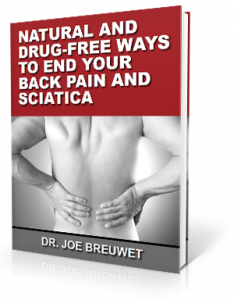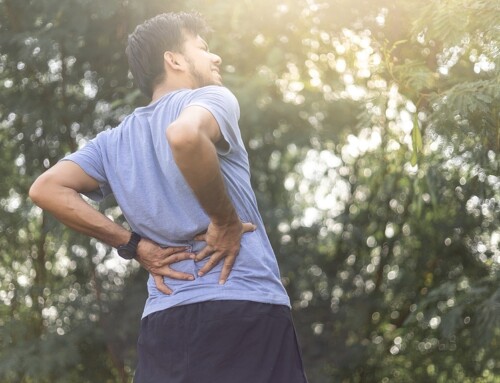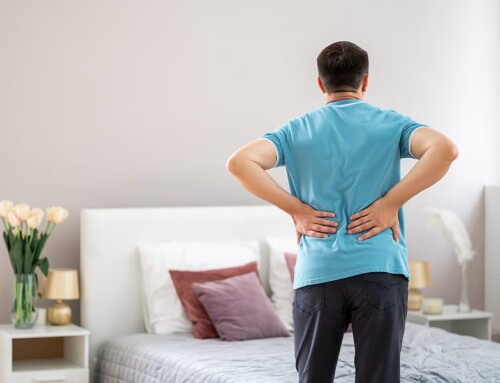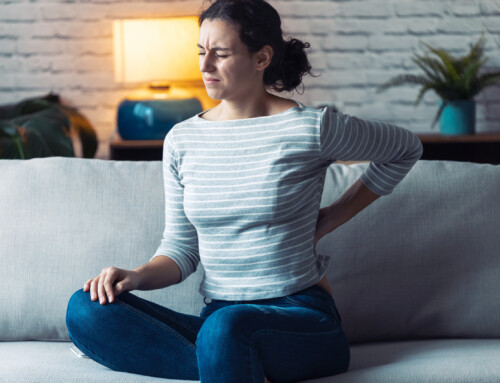Table of Contents
All that fun in the sun and surf can put a toll on the body. Even the most avid surfer or beach lover can get that aching, shooting pain up and down the leg called sciatica. People who experience this kind of pain know that upper cervical care in Honolulu is the place to go.
What Is Sciatica?
A person who feels the pain for the first time might dismiss it as just leg tiredness. Some think it will go away on its own after a night’s rest. When the pain keeps coming back, they get curious about what really causes the pain.
Sciatica is the pain caused by irritation, injury, or compression of the sciatic nerve, the largest and longest nerve in the body. This nerve is attached to the lumbar spine area and traverses southward to the buttocks and all the way down at the back of our left and right leg.
Known Causes of Sciatica
Surfers, athletes, and everyday people who do seemingly normal things can get sciatica if they have an underlying cause such as:
- Pinched nerve
- Slipped disc
- Osteoporosis
- Injury to the spinal cord
- Lumbar or lower back injury
- Spinal stenosis
- Degenerative disc disease
- Spondylolisthesis
- Piriformis syndrome
- Muscle spasms
Some of these causes have technical or medical terms that may make them more complex for the layman. For this reason, when going to an office that offers upper cervical care in Honolulu, residents prefer those that can explain these in comprehensive but straightforward ways. Information is essential for people who experience sciatica pain. Indeed, knowing the root cause of the pain is, for them, the first step towards relief.
Symptoms of Sciatica
Even when people do not yet know nor understand the cause of the pain, they do experience these symptoms:
Back pain
Since the sciatic nerve is attached to the lumbar spine, a back injury or spasm causes the muscles to tense up. The tension irritates the attached end of the sciatic nerve. A misalignment in the lower back can make some bones and muscles angle so that they touch the sciatic nerve and cause compression.
Pain in the Buttocks
A lot of people who complain about sciatica pain have a common denominator: pain in the glutes. They experience pain in the buttocks, most likely due to the sciatica nerve’s direct compression from being seated for many hours. People who work in offices or drive vehicles for extended periods often have pain in their backside because of all the downward pressure that their body exerts on the sciatic nerve as well as the lower back and glutes. At the same time, they are glued to an office chair or drive all those miles without a break.
Numbness
Numbness is also a sign of nerve compression and poor blood circulation. When compression or trauma interferes with the nerve, the brain’s signals become distorted as they pass through the nerve. Even the flow of blood is disturbed. Muscles contract unnaturally due to poor posture. When not appropriately addressed, this symptom could escalate and become a sign of nerve damage.
Pain felt on one side of the body
When there is a misalignment in the spine, it can cause all sorts of health problems like hip pain, leg pain, and even knee pain. The pain comes from the exerted downward pressure on one side of the body. This pressure also pulls on the sciatic nerve, often resulting in a radiating or referred type of pain. When there is an injury, the muscle also tenses up to prevent more damage to a specific part. Muscle inflammation also occurs as a result of trauma. All that tension, of course, can lead to nerve pain due to compression.
“Pins and Needles”
Also known as paresthesia, “pins and needles” are caused by compression or irritation of the nerves. The brain’s signals are distorted as they pass through the compressed nerves, producing a burning, tingling, itching, or prickly sensation.
Hip Pain
Common among those who have a pelvic bone imbalance and spine misalignment, hip pain is one of the most uncomfortable health conditions one can experience. Everyday activities like walking, sitting, and bending can be very awkward. Like the other symptoms, the pain is very likely due to a pinched nerve.
To learn more about the connection between head and neck injuries and low back pain download our complimentary e-book Natural and Drug-Free Ways to End your Back Pain and Sciatica by clicking the image below.
Are You at Risk for Sciatica?
Based on the profile of people who need upper cervical care in Honolulu, residents who go to a chiropractic office for spine adjustments belong to any of these categories or situations:
Pregnant women
Women who are pregnant are prone to back pain and sciatica due to the extra weight in their womb. The excess weight can cause muscle spasms, spine misalignment, and compression of nerves leading to pain.
Has certain genes
Genetics also plays a major influence on why some people are more prone to sciatica. Some studies show that people who suffer from sciatica also have other family members who suffer from the same condition, pointing out a possible genetic link or predisposition.
Individuals with poor posture
It is not surprising that persons who are stooped, lean too much on one side, or have the habit of slouching will also suffer from all sorts of pain, including sciatica. Any misalignment of the spine due to poor posture makes a person more vulnerable to sciatica.
People who perform physical labor or manual jobs
Some occupations are naturally predisposed to various health issues like sciatica. Persons who perform physical tasks are more prone to skeletal, muscular, and nerve-related injuries. These people include those involved in construction work, professional athletes, firemen, military personnel, and the like. Of course, surfers and people who do a lot of beach sports can also over-exert themselves and create micro-injuries to their bodies that accumulate over time.
Aged 30 and above
Aging may contribute to the degeneration of bones and general weakness of the body. When the skeletal structure of a person is compromised, it leads to poor posture. When poor posture is not corrected, it also creates musculoskeletal issues that include nerve impingement or compression.
4 Exercises to Help Get Rid of Sciatica
When surfers and people who do a lot of beach activities realize the need for upper cervical care in Honolulu, they gain access to quality pain relief methods that are non-invasive and lead to zero downtime. No medications are involved, giving them peace of mind that they need not worry about possible side effects.
But first, let’s look at a few exercises that surfers and any workers with back and sciatica pain can do. By following these simple yet effective exercises, their symptoms could lessen, and their health might improve much faster.
1. Sitting Upward Spine Stretch
While sitting comfortably with legs crossed, strengthen your back to lengthen your spine. This helps relieve the tension in the back muscles while allowing space between each vertebra of the spine to be unloaded from downward pressure. Do this gently for 30 to 60 seconds, holding each stretch for about 3 to 5 seconds before relaxing the entire body. Repeat the stretch for about five to 10 minutes.
2. Cobra Stretch
This is an ancient yoga pose that simulates how a cobra postures itself. First, lie down with your face and body towards the bed or a yoga mat. Place your palms flat on the floor or bed beside your body near the rib area. Breathe in, and then, as you breathe out, push with your hands as you gently lift your head and upper body. If you can, straighten your body while keeping your hips, pelvis, and legs pinned straight on the bed or yoga mat. This stretch works well in decompressing your spine and lumbar area.
3. Child’s Pose
In this pose, you need to put your knees together as if you are kneeling. Afterward, sit down and flex so that the top of your feet are flat on the bed or mat. Sit and make your glutes touch your heels. Then, gently bend forward with your arms stretched forward and your head coming into contact with your bent knees. Hold this position for about 10 to 20 seconds. Sit up to relax and bend forward for another 10 to 20 seconds. Do at least three sets of the 10 to 20-second stretch. This pose and stretch are useful for alleviating nerve pressure in the lower back.
4. Gentle Side Straddles
To stretch the inner thighs and legs, stand with your legs wide as if you are forming the letter “A”. Slowly, gently bend on the left leg’s knee as you keep the right leg straight. Sit down to make your right leg have a good inner thigh stretch. Do the same on the left leg. Hold the stretch for 10 to 30 seconds. Do not bounce up and down as you stretch to avoid any leg muscle injury.
Get Upper Cervical Care in Honolulu
Here at Upper Cervical Hawaii, you can also get a much-needed upper cervical spine adjustment. Many lower back problems are due to misalignment that starts with the topmost bones of the spine: the atlas bone (or C1 vertebra) and the axis bone (or the C2 vertebra).
The spine is like a chain link. If the upper spine is out of alignment, it creates structural instability in the middle and lower parts of the spine. When pressure is relieved at the C1 and C2 areas of the spine, the body’s nervous system helps you regain proper posture and alignment.
Contact us today to get more information or to book an appointment. Visit us to get alternative pain relief for your sciatica and other painful conditions.
To schedule a consultation call 808-201-1324 or simply click the button below.
 If you are outside of the local area you can find an Upper Cervical Doctor near you at www.uppercervicalawareness.com.
If you are outside of the local area you can find an Upper Cervical Doctor near you at www.uppercervicalawareness.com.





